Sancho and Mischa Gelb look at each other, and laugh.
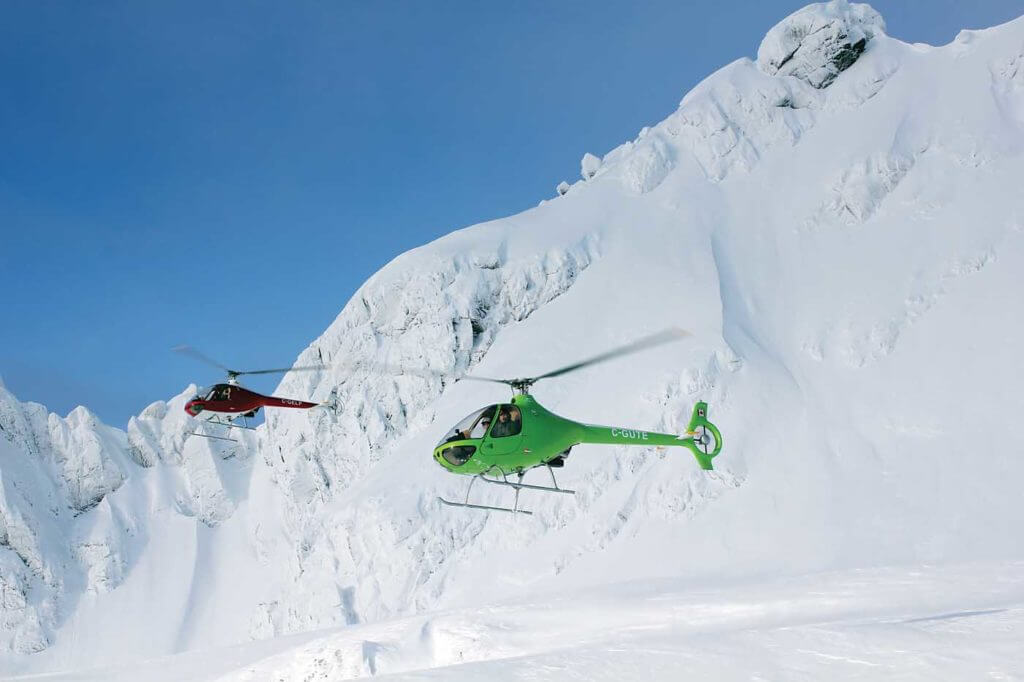
The two brothers are sitting in a cozy classroom in their office hangar, and have just been asked how they ended up co-owning BC Helicopters.
“I was sitting in my living room, looking out the window, calling him, and wondering what he was going to think,” said Mischa. “I said, ‘Hey, Sanch, you want to buy a business?’ ”
It was 2008, and Mischa was already a helicopter flight instructor for the Abbotsford, British Columbia-based helicopter training and charter company. Sancho was an aircraft maintenance engineer (AME), and was working on both fixed-wing aircraft and helicopters for a number of companies.
Bonnie and Gerry Friesen had established BC Helicopters in the 1990s. They decided to retire, and approached Mischa and Sancho with a proposal to take over the operation.

“At the time, it was four aircraft flying flat out,” said Sancho. “Twelve students at a time — it was a really busy school.” BC Helicopters was using the Sikorsky (formerly Schweizer) S-300 as its primary trainer, and was also a dealer for the light helicopter.
The brothers approached the Business Development Bank of Canada with their business plan, and were approved for a loan to purchase the company. A key part of the plan was an immediate move and expansion of the flight training operation.
The transaction closed in November 2008, and in early 2009, BC Helicopters moved from its original location at YXX to a 10,000-square foot hangar and office on the north side of the Langley airport, closer to Vancouver.
“And right about that time was when the [financial] crash happened,” said Sancho. “It was probably one of the best learning experiences we could have had, realizing that it’s just not worth it to try and push to be so big.”
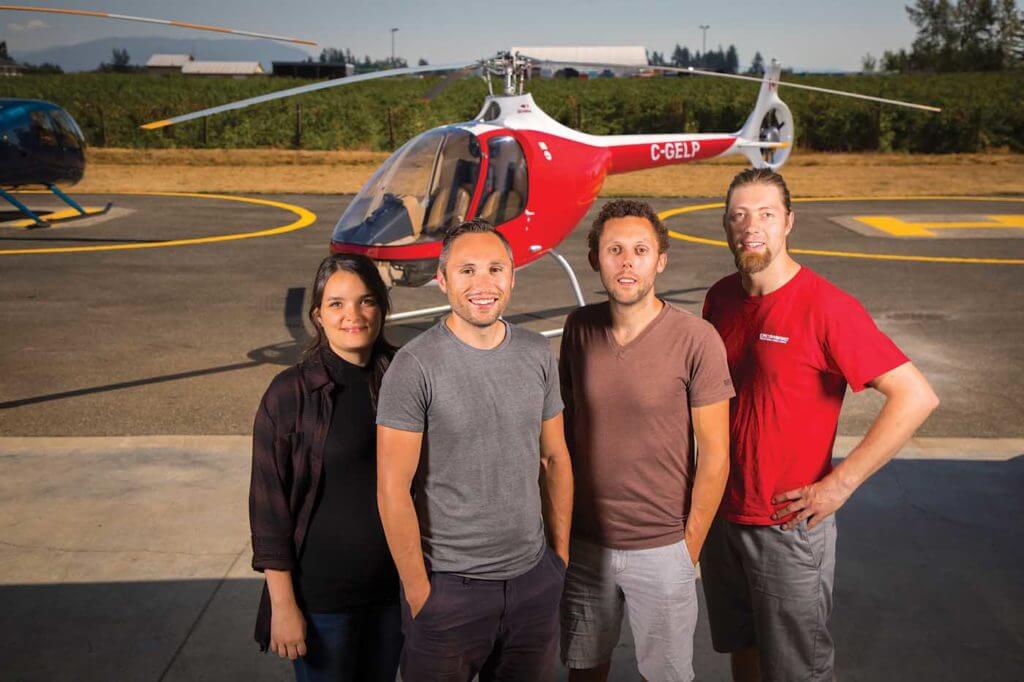
For the next three years, BC Helicopters suffered from a huge downturn in business, sometimes operating with just one student at a time. By 2012, the Gelbs recognized that the Langley operation wasn’t financially sustainable. They downsized the company, and moved back to the original location at Abbotsford airport.
“We had to re-invent ourselves. In the last five years, we figured out how we wanted the business to look, how we wanted it to feel, and have started figuring out our stride. It’s been a slow climb, and in the last year we’ve really seen all of our work coming together,” said Sancho.
Cozy quarters
BC Helicopters’ pad and hangar is somewhat hidden, down a short, tree-lined lane across the street from the Abbotsford airport flight line’s massive hangars. Surrounded by a small blueberry and raspberry farm, and with picnic benches and a BBQ under the mature trees in the backyard, it seems to be more of a family’s home hangar than a corporate operation.
And it certainly is a family affair — Mischa is chief pilot and flight instructor; Sancho is chief maintenance engineer and a flight instructor; Mischa’s wife, Amy, is the company’s administrator; and Sancho’s brother-in-law, Tey Steenbergen, is a helicopter engineer and also handles sales. Simon Wittinger is a recent addition to BC Helicopters, flies charters, and is the only team member who isn’t related to a Gelb.

The compact hangar can hold five machines. Right now, it’s home to a Robinson R66, an R44, and two Hélicoptères Guimbal Cabri G2s. One of the two-seat training helicopters is brand-new, and was delivered just before Christmas, 2017.
The decision to move from the Schweizer to the Cabri wasn’t taken lightly, explained Sancho.
“To be honest, the Schweizer was the dream helicopter, in most ways. Across the board, it was a really good training helicopter — and it still is. We would still be flying it as our trainer if it was still supported by the manufacturer in an effective way. There are so many parts, major parts like driveshafts, that you just can’t get. And that was the demise for us with the Schweizer.”
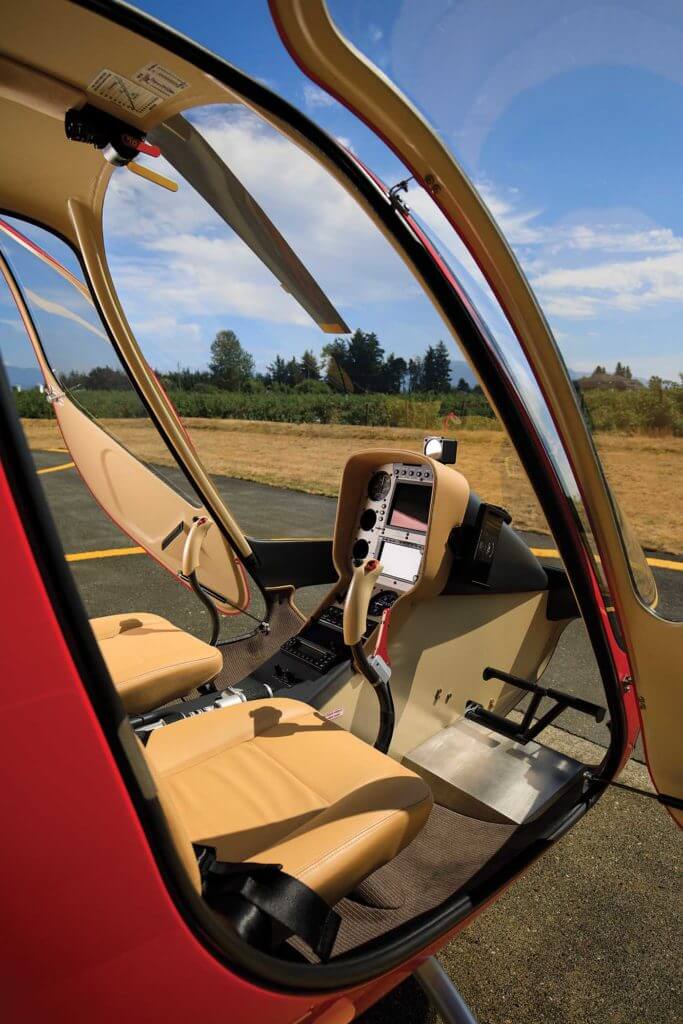
They evaluated other machines, including the Enstrom TH180, before a colleague suggested they have a look at the piston-powered Cabri. At the time, the helicopter wasn’t yet certified in Canada or the U.S., but had its certification from the European Aviation Safety Agency.
They visited Hélicoptères Guimbal’s headquarters in Aix-en-Provence, France, just north of Marseille. Sancho and Mischa met with helicopter engineer and founder Bruno Guimbal, who had decades-long experience with Eurocopter (now Airbus Helicopters) before he left to establish his company. With Airbus exiting the light helicopter market, Guimbal saw an opportunity and designed the Cabri specifically for training.
A clean-sheet design that had its first flight in 2005, the three-bladed Cabri has a Fenestron — a design for which Guimbal co-holds the patents.
“It’s just an awesome mix of everything,” said Mischa. “It’s a little bit like so many different things. It’s a little bit like an [Airbus AS350] AStar, it’s got such good maneuverability. It’s got modern avionics like an AStar. With the three-bladed rotor, it’s got really good controllability — the same controllability as the Schweizer. But the Fenestron makes it fly very much like an EC120 in pretty much every way possible.”
The Cabri has a fully-articulated rotor system, with elastomeric bearings in the rotor head. That impressed AME Sancho, both for maintenance and in-flight.
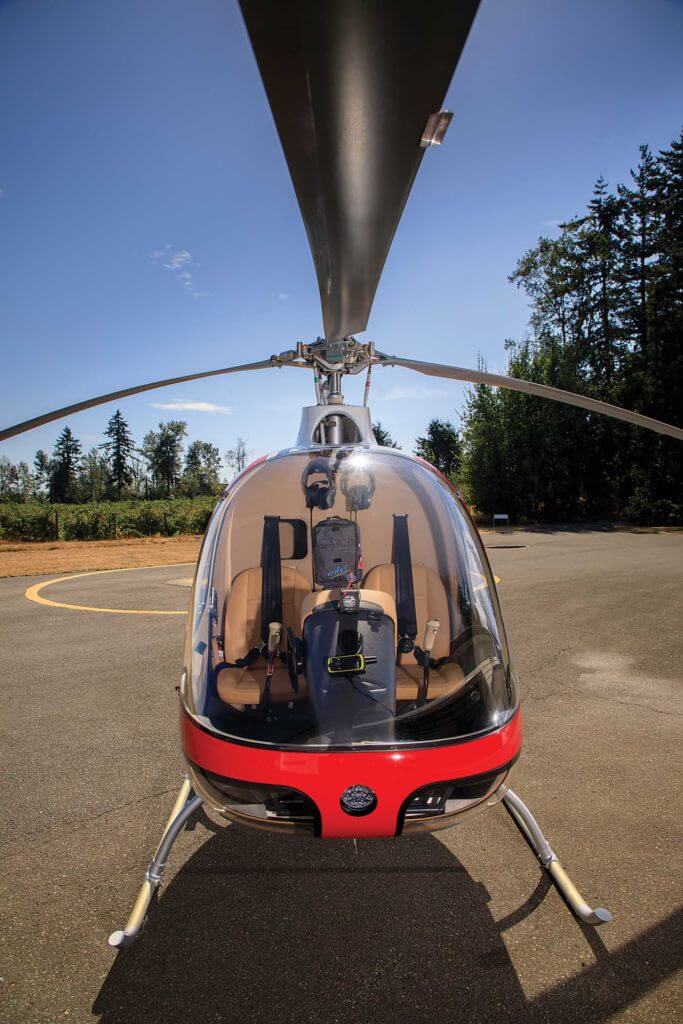
“There’s no greasing of the head, so it’s strictly visual inspections on the pre-flight,” he said. “It creates a very modern, very low-maintenance rotor hub that’s very smooth. The lead-lag dampers are elastomeric as well. And they recently incorporated a flapping counter-weight which has made it butter-smooth. It’s amazing. I’ve never flown another helicopter as smooth.”
Made for training
With crashworthy seats and passenger compartment, up-to-date flat-panel avionics, and even a luggage compartment, the Cabri has been designed to endure the rigors of flight training operations. Aside from the time-limited gearbox and engine, all the machine’s components are serviced “on condition.”
During the design process, the Cabri’s composite main rotors were ground-tested to see how they’d handle an accidental contact with a six-inch (15-centimeter) telephone pole, simulating a confined-area operation gone awry.
“It shattered the telephone pole, and when they finished, they inspected it, and determined that it was serviceable to fly home,” said Sancho. “It had a little dent in the stainless steel leading edges. That’s the kind of stuff that blew my mind.”
In addition to flying the Cabri for training, BC Helicopters is currently the sole Canadian distributor for the machine. The Gelb’s goal is to have three Cabris for flight training, along with the R44 and R66 for advanced training and charters. And according to the brothers, Guimbal has a four- to five-seat helicopter in the works.

Will that new machine be joining the BC Helicopters’ fleet?
“Guaranteed,” said Mischa. “As soon as it comes out, I don’t even need to see it — we’re going to be getting one. I just know that the next helicopter they put out is going to be amazing.”
The Cabris are currently flying about five hours a day, but Mischa notes that one of the biggest challenges is scheduling students, machines, and maintenance.
“If the helicopters aren’t booked, the company isn’t making any money,” he said. “If they’re fully booked, that’s great. And as soon as you’re bordering on getting fully booked, then there’s always extra people that want to fly. Trying to manage that is challenging.”
About 12 students per year graduate from the BC Helicopters training program, and the brothers hope to grow to between 20 and 24 students per year, with a maximum of four students assigned to an instructor at a time.
The Gelbs have focused the training syllabus to create pilots that are industry ready. “You can almost train anybody to pass a flight test,” said Mischa. “But for them to go out and meet an employer, and for that employer to say, ‘This guy’s awesome, he’s useful, he thinks on his feet’ — that’s the direction we’re going.”
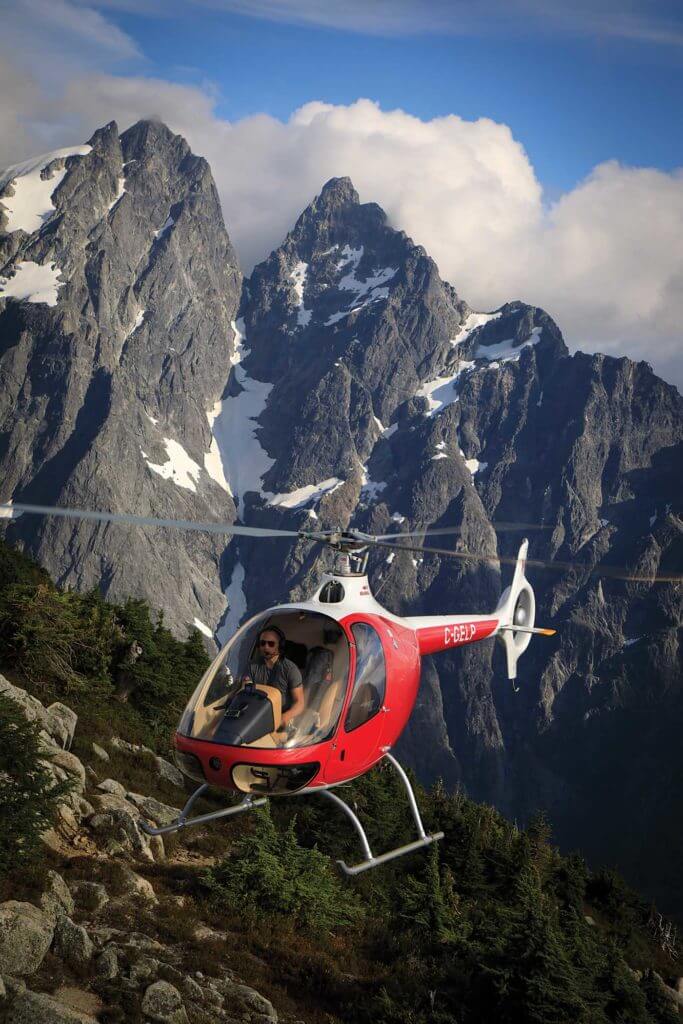
Instead of having a ready-to-go machine on the flight line, students arriving for a lesson can be expected to pull a helicopter out of the hangar, fuel and pre-flight it, and then come and get the instructor. And while the lessons follow the normal training process, students might be surprised to find they’re part of a special event, like a heli-snowboarding and heli-skiing day, or a long-line challenge.
“We took the helicopters out, and we literally did a long-line challenge with different obstacles that they had to handle,” said Mischa. “Our students love doing super-fun things like that, and the amount of learning that happens in that day is phenomenal.”
Looking ahead
It’s clear that Sancho and Mischa are passionate about flying, and are excited to train new helicopter pilots. But they suggest that some of the long-standing hiring practices in the industry need to change, to have well-trained and qualified pilots in the system.
“I think the most frustrating thing is that the industry is so closed minded to being more creative to getting pilots flying, building experience, and mentoring pilots into positions where they’ll eventually become very valuable,” said Sancho.
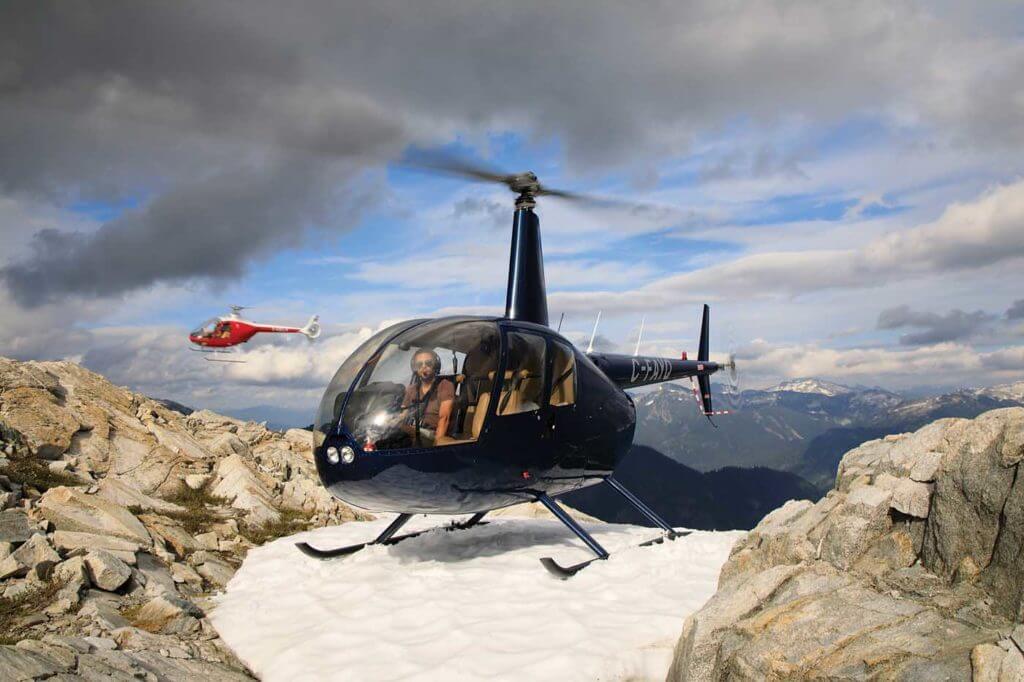
” ‘You’re going to work ramp here until maybe someday we can use you.’ That’s the mentality: ‘You’re just a grunt laborer until we can maybe use you to fly our helicopters.’ That’s the thing we’d ultimately like to see change, because if it doesn’t happen, the industry will collapse.”
Mischa has spoken with his colleagues at other operators, to promote the idea of mentorship. “They’ve said that there’s lots of times when there’s a front seat open. So why not throw a 100-hour pilot up there? If everybody starts thinking of the bigger picture of what this industry is going to look like in 10 or 20 years, then maybe we can make it happen.”
And maybe the two brothers can make it happen — but not at the expense of changing the nature of their family-run business.
“You feel it throughout the operation, when the students come in,” explained Sancho. “It’s not like going into a big university operation, where you have 1,000 people walking around.
“That’s something that we really love about what we do, and we don’t really want to change.”





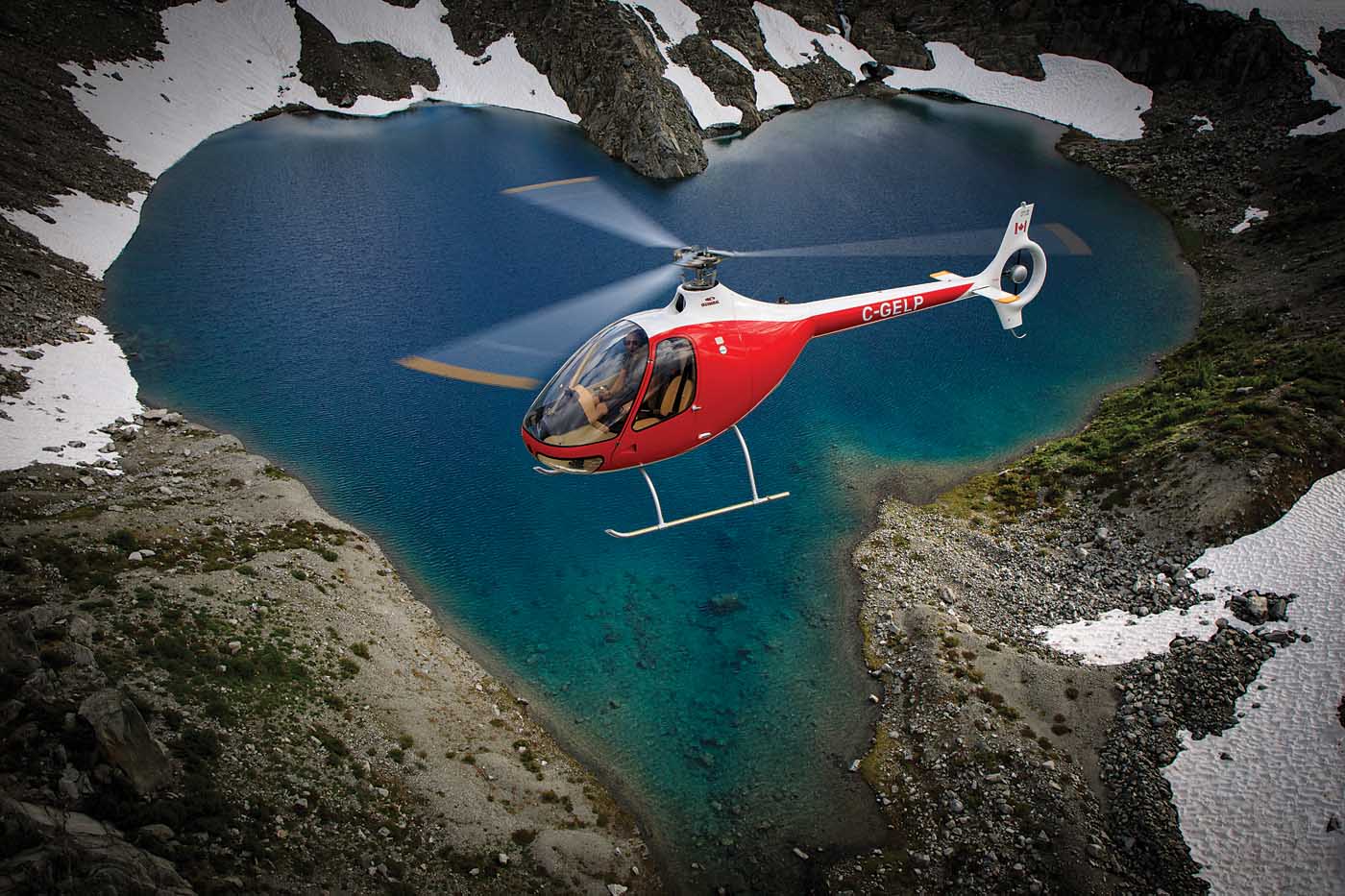
What a well written, inspirational, story based article. I follow BC Helicopers on social media. Their use of action camera’s enables everyone to fly with them and to not only experience what it’s like to fly a Cabri, but to follow them on some of the most amazing outdoor adventures imaginable. Mischa has been very supportive of me personally and I’m not even one of his students, which demonstrates what an incredibly kind, positive and supportive family this truly is!
I totally Agree. I’m a ppl (H) R44 R2 student in the United Kingdom and I plan to fly with BC in the very near future. Mischa is a Very likeable chap with a vast array of knowledge operating helicopters at HDA. I look forward to meeting these guys and enjoying the Canadian outdoors. The cabri will be my next type rating for sure..
Awesome article on an awesome company and family. These guys have it locked in for smart effective training. Well done. The Pilot Yellow blog is so forward thinking. If that existed 20 years ago I would have been following my dream to fly helicopters. In the mean time I can fly with them like a student watching their flight blog. In the mean time I’ll keep plugging along with fire and EMS work. Thanks for the great article. Fly safe all
Mike
Thankyou very much for the Videos very nice I like to say this way, to all Micha Gelb and your Crew doing gread Job awesome I realy appriciate. I`m from Germany town Plattling have over the jears now little over 100 hours and over 20 hours on Solo at Sprinfield,Mo. Bell 47 at Airpark South in 1988 and 1990 and some hours over the jear in Franc Hughes 300 as well was lifing 4 jears in Cedar Park,Tx. Hughes 300 some hour and Jet Ranger at Liberty Hill close to Austin,Tx. 1992 true 1996 Texas permanent ! 1996 divorce since back in Germany !
Desire you all a habby Easter
Noooo plz.
I like the story then my I got frustrated. They want to produce more 100 hours pilot per year ? Hell no. plz no. It’s bad enough as it is don’t sell to more students the 50k – 75k dream, it hurts them because I believe all flight schools say its possible to get a job in the first year and the reality is most of people will not get a job… a job that will lead to flying experience, maybe a 5 hour endorsement in 3 years and they call that success. Also, having an opinion about that the industry needs to change about low time pilot is totally not enough,